The report of the 3rd Biennial Symposium on Ancient Iranian
According to the report of the public relations office in the Institute for Humanities and Cultural Studies,At the beginning of the conference, Dr. Yahya Fouzi (Vice Chancellor for Research and Postgraduate Studies) welcomed the audience, Iranologists and linguists, and appreciated the faculty members of the linguistics department, especially Dr. Nasrollahzadeh, the director of the Faculty of Linguistics. He also, appreciated the scientific director of the symposium for holding the third session of this event, he said: one of the goals of the Institute for Humanities and Cultural Studies according to its approved statute is to research, represent and introduce the identity and heritage of the Iranian Islamic Civilizationas well asexchange of knowledge and dialogue of civilization at national and international levels, therefore this research on the subject of ancient culture and languages is a step in this direction. Basically, understanding the ancient world, which can be understood through ancient studies and through ancient culture and languages, can be very effective in a deeper understanding of our today's identity and the connection between different levels of identity. The study of culture, history of Persian language and the study of Iranian dialects are of great importance in this regard.
Dr. Fouzi added: "The identity of today's Iranian society is related to its historical, cultural and linguistic past, and according to Allameh Shahid Morteza Motahhari, it is influenced by the Iranian and Islamic layers.For the Iranian layer, researchers point to the existence of geographical, cultural and linguistic and geographical components. For national identity, researchers point to the gathering of a group of people around the central plateau of Iran. Naturally, this geographical factor created a common destiny, opportunity and threat for the inhabitants of this land and strengthened a kind of convergence and common identity between them.”
He said: "on the cultural components of ancient Iran which affects this identity, it can be mention on the common epistemological and worldview components that are taught by the teachings of Zoroastrian religion and the Iranian culture and customs.Belief in the metaphysics, Ahura Mazda, the forces of good and evil, and live inhereafter are the result of this epistemology, and the Iranian cultural customs are the manifestation of this type of epistemology, worldview, anthropology, and type of attitude on the political system which arein Persian language and literature, national celebrations and ceremonies are manifested.”
Dr. Fouzi said: "In other words, monotheistic culture, theism and religiosity among the Iranian tribes, influenced by the teachings of Zoroastrianism, Eastern epistemology and worldview, is one of the important components of identity in ancient Iran. This culture provides a kind of identity and distinctionfor Iranians and the East in the face of the humanistic and materialistic epistemology and worldview of the West and Greece.We can also point to the spirit of the oppression and independence and the connection between religion and politics in ancient Iran, the continuation of which can be seen in the history and politics of Iran as yet.”
Fouzi added: "These cultural roots based on the inner unity of monotheistic religions were the binding factor forthe identity of Iranians with Islam, so the religious teaching of Islam was not unfamiliar to Iranians and Iranian metaphysics. Illuminationism(Ishrāqi) were emphasized in Islam and Islam depicted a material and spiritual world that were familiar to Iranians.So a large number of Iranians quickly and willingly accepted Islam and tried to bridge the gap between Iranian identity and the new Islamic identity centered on Islam. Iranian Muslims tried to organize theirlives based on this new framework. It was based on this connection that the Iranian-Islamic identity was formed, and today the strengthening of this identity in Iran requires this dynasty of identity and the recognition of the components and cultural dimensions that connects and shares the past and the present.
But along with these factors and as another important factor for creating identity in Iran, it should be noted that Persian language has an important place on the identity of Iranians. It can be said that one of the components of the identity and civilization of the Islamic Iran is Persian culture and language and its rich literature as well as Iranian dialects. According to one scholar, this language has been spoken in the days when Cyrus and Darius had spoken it and engraved their charters and decreed on the front of rocks and pillars, or when the great Ferdowsi wrote his great epic with it to empower the national interests and culture with it and show self-knowledge and self-confidence to Iranians,, or when Rumi, the great mystical literary creator of Iran, sang its works on Persian language to teach the people religious and mystical authenticity, when Hafez and Saadi wrote their most enduring literary works, and when the leaders of the Islamic revolution of Iran sent spiritual, political and liberating messages through this language to the world; it has always played and continues to play a major and special role in the stability and life of Iranians and national unity.”
Dr. Fouzi added: "Persian language is important in different ways. In this language, masterpieces have been created that are unique in the world. Linguists say that there are 6,000 languages in the world, among which there are only a few languages in which works such as Ferdowsi's Shahnameh, Shams general, Saadi general and Hafez poems have been created. In fact, the number of languages in which such important works have been created is very limited, and this is an important honor for the Persian language. One of the reasons for the importance of Persian language is that it is a link between different Iranian ethnic groups. Iran is a country with different ethnicities, each of which has its own language and the link between these ethnic groups, and their common identity is Persian. Persian is a language that is known in terms of its historical background, and this feature has been achieved for fewer languages in the world. The Persian language we speak today is a sequel to middle Persian that was spoken in the Sassanid period, and the language of the Sassanid period is a sequel to the language that was spoken in the Achaemenid period; so understanding this continuity is important. In other words, Persian as the official language of Iran is a result of middle Persian and ancient Persian, and accurate and scientific knowledge of this language will not be possible except by studying its history and background. In this regard, deep knowledge of ancient languages can be very effective in understanding Persian language and its rich literature as well as Iranian dialects.
In addition to understanding the culture and ancient languages of Iran, it will be very helpful in understanding the linguistic foundations of Iran’s cultur; and strengthening it will be a connecting factor between different countries and ethnicities around language commonalities. Today the official language of Iran, Afghanistan and Tajikistan is Persian. Moreover, three to four centuries ago, Persian was an international language, and from India to southern Europe, Persian was a literary language, and in a broader sense, Iranian languages, which is a branch of Indo-Iranian languages, is the connecting factor of civilization between countries and regions of Iran, Afghanistan, Tajikistan, parts of Pakistan, Turkish Kurdistan, Iraqi Kurdistan and parts of Central Asia and the Caucasus, and parts of Iraq, Syria, Turkey and even the Caucasus are spoken by them are inherited from the ancient Iranian languages, as a result, a deeper understanding of the ancient languages of Iran as the foundation of the Persian language is of particular importance for establishing a deeper connection between these countries and areas.”
At the end of his speech, Dr. Fouzi, the research deputy of the institute said: "In fact, Persian language has always linked as visible and invisible circles,the cultural and national identity of the Iranian people and its tribes and is still the main factor of national unity of Iranians. Therefore, maintaining and strengthening it by recognizing its rich foundations, dialects and literatureswill be a great task for everyone and a national task for the Institute for Humanities and Cultural Studies.We hope this symposium will be weighty to achieve the desired goals by using the opinions of scholars and participants and to deepen and expand this knowledge and in particular, presenting the latest achievements of researchers in the field of ancient Iranian culture and language will take effective steps to use these achievements to link between the past and the present and strengthen the national identity in the Islamic Iran.
Dr. Zohreh Zarshenas, the scientific secretary of the conference, said opened the conference and said: "Iran, as the inheritor of ancient civilization, has played an important role in creating and shaping world civilization and determining the course of human history. Therefore, recognizing and introducing this civilization is of great importance. Culture is the soul of a civilization and Iranian culture is manifested even in Western philosophy; as Hegel, the famous German philosopher, considers Iran as the true representative of the transfer of history from east to west and emphasizes its prominent role in the development of human civilization. One of the most important features of this rich culture is the Persian language, which is one of the basic pillars of our national identity.” She added: "Fortunately, many documents and writings are available from the middle and ancient Persian period." In addition to Persian, there are many documents from other ancient and medieval languages such as Avestan, Sogdian, Kharazmi, Khotani, and Balkhi. Also, Iran has an important linguistic and dialect diversity that is less observed in other parts of the world. The study of these documents and texts and the knowledge of these languages and dialects help us to know more about the culture and civilization of this land and also to strengthen the Persian language.”
She said: "Despite the successes that have been achieved in recent years in terms of quantity and quality in the development of Iranian studies and linguistics in general, and ancient culture and languages in particular in the country, there is still a long and steep path ahead of this scientific community."The truth is that this scientific community must show that it is determined and able to take steps to meet scientific and research needs of the country in the current and future.
Dr. Zarshenas emphasized that “research on these valuable ancient texts and their translation, publication, and dissemination, as well as helping to preserve the languages and dialects of Iran, by documenting, recording, describing, analyzing, and explaining them, in order to localize this knowledge as well as their growth and promotion in Iran can be very effective. Biennial symposium on ancient culture and languages have been planned and held in order to get acquainted with the latest research achievements in the field of culture, languages, and ancient, medieval and modern Iranian texts; also, the extensive study of Iranian languages as one of the factors of connection between the nations of the Iranian world; also, to motivate young researchers to study more and more deeply in the field of Iranian linguistics and Iranistics,
The first session of this symposium was held in 2017 on May22 and 23, hosted by Shahid Beheshti University, and the second session was held on 30 April and 1, May 2019, hosted by the University of Tehran. In scientific exchanges, in order to be aware of the scientific developments of the world and new theories, the use of scientific and communication tools is very necessary and holding international conferences can be one of the best measures in this field. Therefore, in order to achieve this goal, renowned professors in this field and world-renowned Iranologists were invited to give lectures, which were accepted by a group of them. It is a great fortune that in this conference we will benefit from valuable lectures by professors and scientists from various countries such as Germany, England, Italy, Canada, France and China along with Iranian professors, experts, and researchers.
Following the conference, Prof. Jaleh Amoozgar, the professor of ancient culture and languages, and Prof. MohammadTaghi RashedMohsal, a distinguished professor at the Institute for Humanities and Cultural Studies, were among the invited speakers to open the symposium.
This event was held for two days, from 24 to 25 January, 2022.
Abstracts of conference papers are available at the following link:

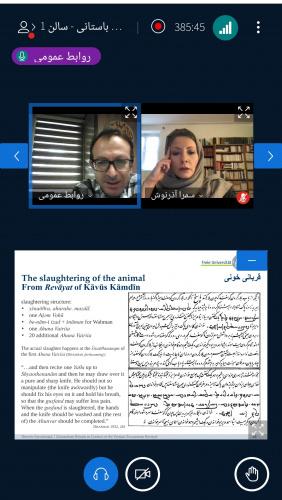
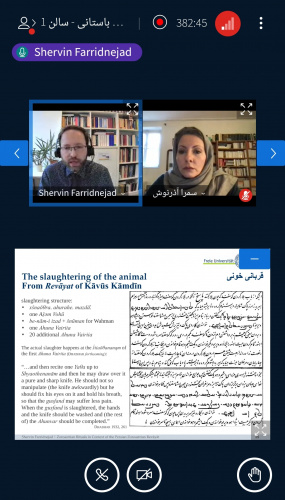
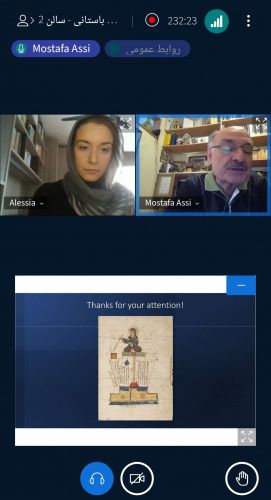

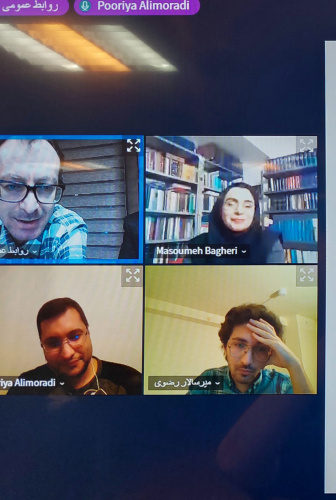

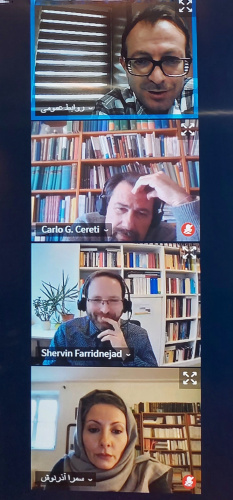

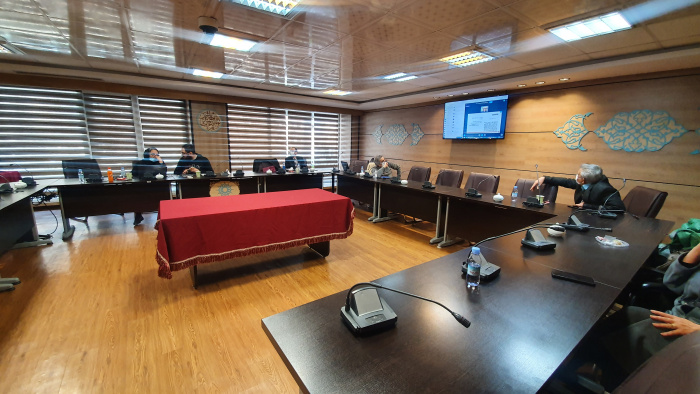
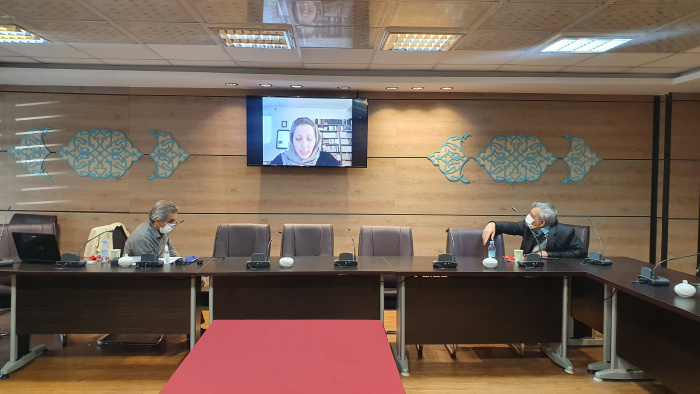
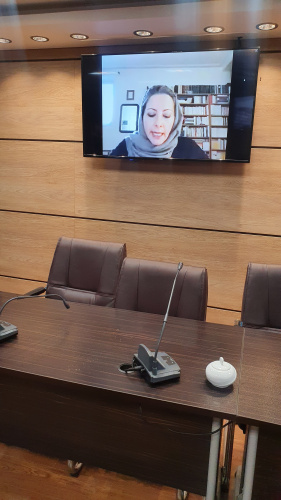







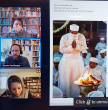



Your Comment :